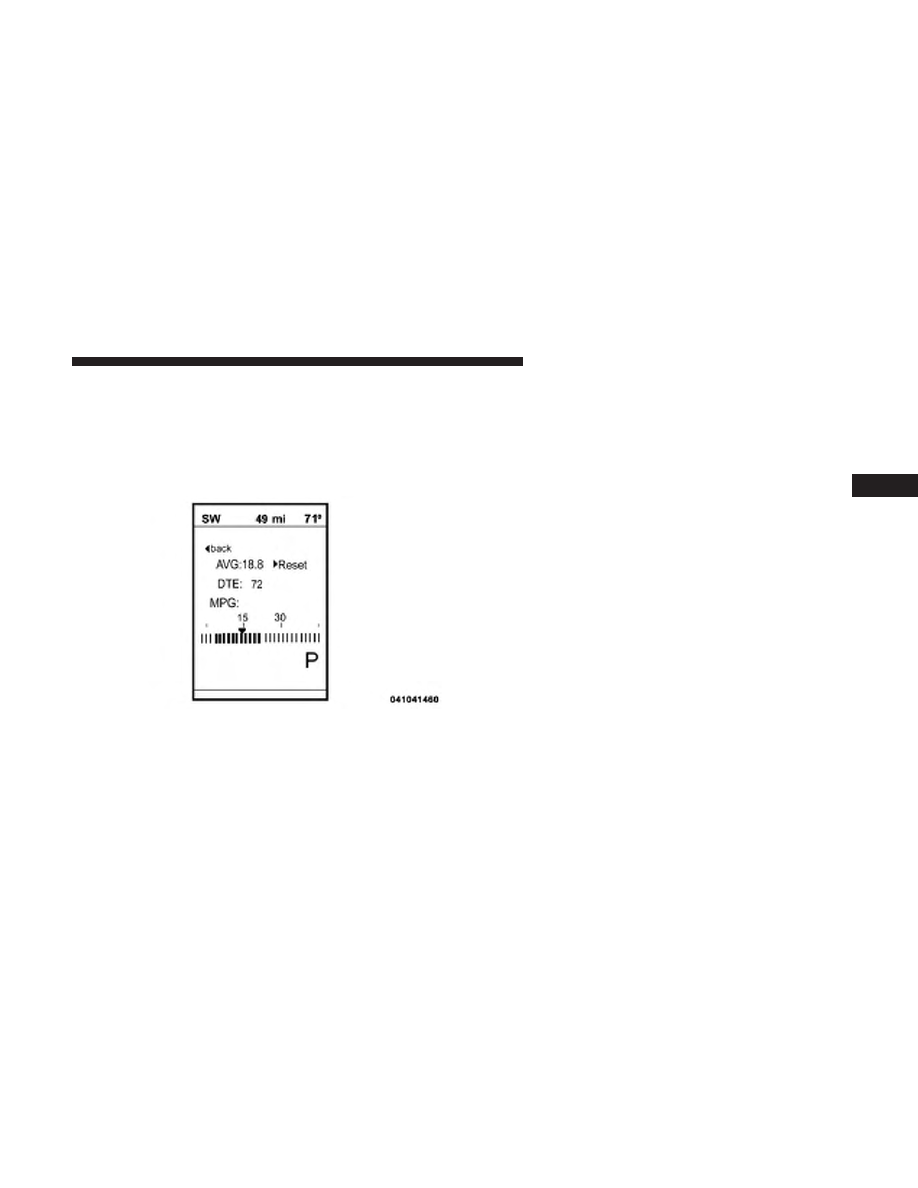Dodge Journey (2019 year). Manual - part 9

Average Fuel Economy
Shows the average fuel economy since the last reset. When
the fuel economy is reset, the display will read “RESET” or
show dashes for two seconds. Then, the history informa-
tion will be erased, and the averaging will continue from
the last fuel average reading before the reset.
Distance To Empty (DTE)
Shows the estimated distance that can be traveled with the
fuel remaining in the tank. This estimated distance is
determined by a weighted average of the instantaneous
and average fuel economy, according to the current fuel
tank level. DTE cannot be reset through the right arrow
button.
NOTE:
Significant changes in driving style or vehicle
loading will greatly affect the actual drivable distance of
the vehicle, regardless of the DTE displayed value.
When the DTE value is less than 30 miles (48 km) estimated
driving distance, the DTE display will change to a “LOW
FUEL” message. This display will continue until the ve-
hicle runs out of fuel. Adding a significant amount of fuel
to the vehicle will turn off the “LOW FUEL” message and
a new DTE value will display.
Instantaneous Fuel Economy
This display shows the instantaneous fuel economy MPG
or L/ 100 km in bar graph form while driving. This will
monitor the gas mileage in real-time as you drive and can
be used to modify driving habits in order to increase fuel
economy.
Vehicle Speed
Push and release the up or down arrow button until
“Vehicle Speed” displays highlighted in the instrument
cluster display. Push the right arrow button to display the
Fuel Economy
4
GETTING TO KNOW YOUR INSTRUMENT PANEL
141